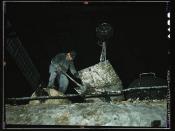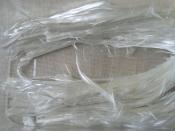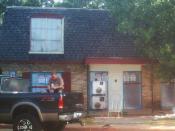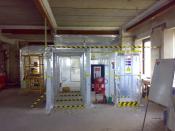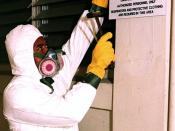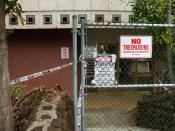ASBESTOS POTENTIAL Asbestos is a naturally occurring mineral fiber once utilized in a multitude of building materials due to its high tensile strength and fire resistance. The EPA has categorized asbestos into two types, as either friable, or non-friable, materials. Friable materials are defined as being easily broken or crushed by hand pressure (e.g., soft acoustical ceilings or blown-on fireproofing). Non-friable materials are defined as being not easily broken when in normal use, but that are subject to breakage during building renovations and demolitions.
Most friable asbestos-containing materials were banned in building materials by 1978. Non-friable asbestos is generally found in pre-manufactured products that are composed of asbestos fixed within an adhesive matrix, forming such products as roofing felts, floor tile, transite pipe, and mastics. This asbestos-in-matrix composition is significant because of its potential to release fibers of asbestos when broken, and thereby to cause human exposure during normal activities.
The EPA currently does not require the removal of asbestos-containing materials that do not present a problem for human exposure when placed in normal service.
On October 11, 1994, a new FED-OSHA ruling defined four classes of work on building materials concerning potential asbestos content. Under this ruling, thermal system insulation and sprayed-on, troweled-on, or otherwise applied surfacing materials installed before 1980 are considered to be "presumed asbestos-containing material" (PACM) unless a certified consultant samples and analyzes the material for asbestos content. PACMs are considered high risk materials for abatement, and their removal is categorized among Class I asbestos removal activities. Other building materials, such as floor or ceiling tiles, siding, roofing, transite panels, floor sheeting, and floor or roof mastics, are also considered PACM unless sampled and identified as to asbestos content by a certified individual. However, these other building materials are considered low risk materials for abatement, and their removal is categorized as Class II, III, and IV operations for asbestos removal, repair, and maintenance.
Significant under these 1994 FED-OSHA regulations is the deletion of the category "Small-Scale Short-Term Duration" removal activities that regularly allowed Class I through IV activities to proceed with less regulatory oversight. Under the NESHAPS laws of 1976, and as later amended, asbestos does not have to be removed from a facility until such time as it undergoes major renovations or is demolished. Until that time, the present emphasis by the EPA is to recommend protocols for repair of any damaged areas, and management of the asbestos-containing materials.
Prior to any renovation work being done involving ACBM of 260 lineal feet or 160 square feet in area, the local branch of the EPA must be notified. Prior to demolition of any building or house, mandatory bulk sampling must be accomplished and, if asbestos is present, notification must be made to the local branch of the EPA and Air Quality Management District. In California, the removal of any ACBM greater than 0.1 percent by weight requires notifications to CAL-OSHA, and a licensed contractor with an asbestos certification is required for any work exceeding 100 square feet.
